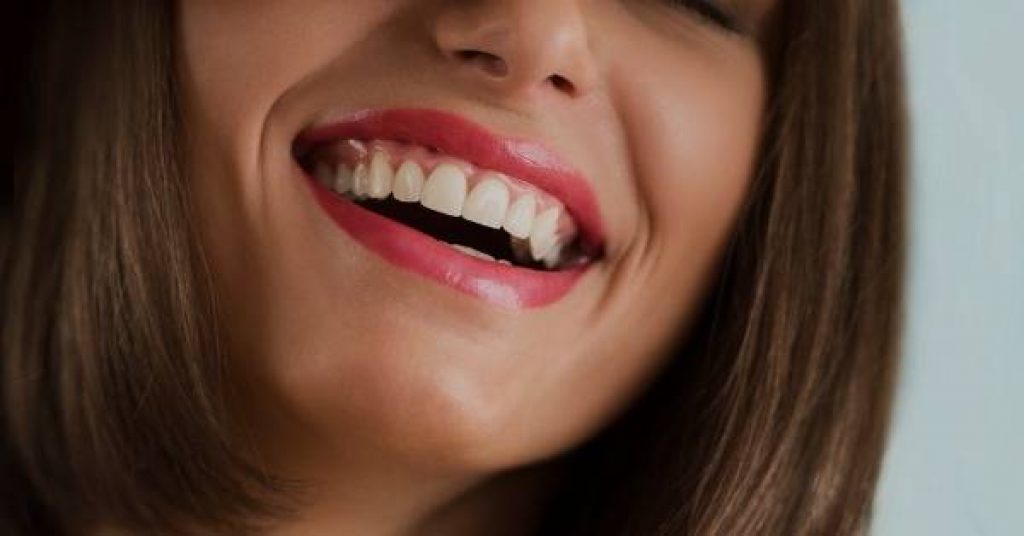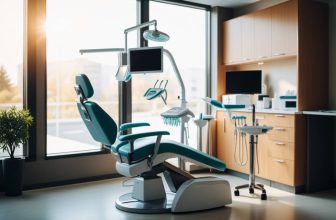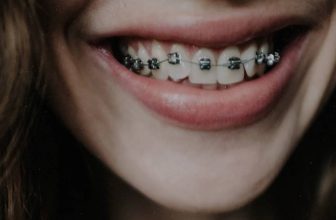When it comes to dental care, a permanent retainer is a valuable investment. A permanent retainer is a custom-made orthodontic appliance to correct or maintain teeth alignment. It is used in conjunction with braces or Invisalign and is typically worn for about two years.
What is a permanent retainer?
A permanent retainer is a type of orthodontic appliance that is cemented into place behind the teeth. It consists of a metal wire bonded to the teeth back. A permanent retainer is not removable like a traditional retainer and must be removed by a dentist.
What are they made from?

Permanent retainers are typically made of stainless steel or titanium. The metal wire is bonded to the back of the teeth with a strong dental adhesive.
Are permanent retainers worth getting?
The cost of a permanent retainer is typically higher than the cost of a traditional retainer, but it offers several benefits. Permanent retainers are more durable and less likely to be lost or broken. They also require less wear and tear on the teeth than traditional retainers.
What are the problems with permanent retainers?
Permanent retainers can cause tooth decay and gum disease if they are not cleaned properly. They can also trap food and bacteria against the teeth, which can lead to bad breath. If you have a permanent retainer, it is important to brush and floss regularly to reduce the risk of these problems.

There are many benefits to getting a permanent retainer. However, there are also some risks and problems that you should be aware of. If you are considering getting a permanent retainer, talk to your dentist about the pros and cons to help you make the best decision for your smile.
Benefits
Fixed retainers offer several benefits over traditional retainers. They are more durable, less likely to be lost or broken, and require less wear and tear on the teeth. Permanent retainers also allow you to brush and floss normally, which helps reduce the risk of tooth decay and gum disease.
1)Reduced risk of losing or misplacing the appliance
Since permanent retainers are cemented in place, there is no need to worry about losing or misplacing them. This can save you the time and money spent replacing a lost retainer.
2)Allows for normal brushing and flossing
Permanent retainers do not interfere with your ability to brush and floss normally. This helps reduce the risk of tooth decay and gum disease.
3)Reduced wear and tear on teeth
Unlike traditional removable retainers that must be removed for eating, drinking, and brushing, permanent retainers are always left in place. This eliminates the need to remove and replace the appliance multiple times daily, reducing wear and tear on the teeth.
4)They are less visible
Fixed retainers are bonded to the back of the teeth, making them less visible than traditional retainers. This can be a cosmetic advantage for some people.
5)They are more comfortable
Since permanent retainers are less likely to rub against the cheeks or gums, they can be more comfortable to wear than traditional retainers.

6) They are cheaper than braces in the long run
While the upfront cost of a permanent retainer may be higher than a traditional retainer, it is typically cheaper than braces in the long run. This is because you will not need to replace a lost or broken retainer and will not need to see the orthodontist often for adjustments.
Drawbacks
Permanent retainers can cause tooth decay and gum disease if they are not cleaned properly. They can also trap food and bacteria against the teeth, which can lead to bad breath. If you have a permanent retainer, it is essential to brush and floss regularly to reduce the risk of these problems.
1)They can cause tooth decay
Permanent retainers can trap food and bacteria against the teeth, which can lead to tooth decay. If you have a permanent retainer, it is important to brush and floss regularly to reduce the risk of this problem.
2)They can cause gum disease
Permanent retainers can also trap food and bacteria against the teeth, which can lead to gum disease. If you have a fixed retainer, it is important to brush and floss regularly to reduce the risk of this problem.
3)They can be difficult to clean
Permanent retainers can be difficult to clean because they are bonded to the back of the teeth. This makes it easy for plaque and tartar to build up on the appliance. If you have a permanent retainer, it is important to brush and floss regularly to reduce the risk of these problems.
4)They can cause bad breath
Permanent retainers can trap food and bacteria against the teeth, which can lead to bad breath. If you have a permanent retainer, it is important to brush and floss regularly to reduce the risk of this problem.
5)They can be uncomfortable
Permanent retainers can be uncomfortable because they are bonded to the back of the teeth. This can cause the teeth to feel sore or sensitive. If you have a permanent retainer, it is important to see your dentist for an adjustment if you are having any discomfort.
6)They can be visible
Permanent retainers are bonded to the back of the teeth, making them more visible than traditional retainers. This can be a cosmetic disadvantage for some people.

7)They can be expensive
The upfront cost of a permanent retainer can be more expensive than a traditional retainer. This is because an orthodontist usually does the procedure. However, a permanent retainer is typically cheaper than braces in the long run.
8) Plaque build-up
Fixed retainers can trap food and bacteria against the teeth, leading to plaque build-up. If you have a permanent retainer, it is important to brush and floss regularly to reduce the risk of this problem.
Permanent retainers have many advantages and disadvantages. Some people may find the drawbacks more significant than the benefits, while others may find the benefits more effective than the drawbacks. It is important to speak with your dentist or orthodontist to decide if a permanent retainer is suitable for you.
What to do to minimize drawbacks
Fixed retainers can be a pain to work with, but if you follow a few simple guidelines, you can minimize any problems. First, avoid hard or crunchy foods – they can damage the retainer or make it difficult to keep in place. Also, avoid putting things in your mouth that don’t belong there, like fingers, pens/pencils. Good hygiene is key – brush around and under the retainer and floss regularly to minimize plaque build-up. And regular cleanings with the dentist will help keep tartar from building up and making it difficult to keep your retainer in place.
How much do permanent retainers cost?
The cost of a permanent retainer can vary depending on a number of factors, such as the type of retainer, the dentist or orthodontist performing the procedure, and the geographic location. In general, permanent retainers can cost anywhere from $500 to $2,000.

It is important to speak with your dentist or orthodontist to get an estimate of the cost of a permanent retainer before having the procedure done.
Also, you should remember that you will, in most cases, need a professional to remove them, which won’t be for free.
Cost to remove permanent retainer?
The cost to remove a permanent retainer can vary depending on a number of factors, such as the type of retainer, the dentist or orthodontist performing the procedure, and the geographic location. In general, the cost to remove a permanent retainer can range from $50 to $200. It is crucial to speak with your dentist or orthodontist to estimate the cost of removing a permanent retainer before having the procedure done.
How to remove a permanent retainer at home
There are a few methods that people have used to remove permanent retainers at home, but it is important to note that dental professionals do not recommend these methods. Some of the ways that have been used include using dental floss or an interdental brush to try to loosen the retainer, using pliers to pull the retainer off, and using a toothpick to try to push the retainer off.
There is no guarantee that these methods will work; they could potentially damage your teeth or gums.
If you want to remove your fixed retainer, it is best to see your dentist or orthodontist for professional help.
Frequently Asked Questions
How long do you wear a permanent retainer?
After removing your braces, it’s important to continue wearing a retainer to keep your teeth in place. Your orthodontist will likely recommend a wire retainer behind your teeth immediately or six months post-braces. Some people opt for permanent retainers fixed to their upper and lower teeth. Still, dentists are less likely to recommend a permanent retainer for top teeth because they have a greater chance of breaking prematurely.
Can teeth shift with a fixed retainer?
While teeth can shift with a permanent retainer, it is less likely to happen with a removable retainer. This is because the fixed retainer is bonded to your teeth and cannot be taken out. However, it is still important to follow the care instructions from your dentist or orthodontist to ensure that your retainer stays in good shape and does not become loose.
Can a permanent retainer come off?
Permanent retainers are bonded to your teeth and should not come off. However, if the retainer becomes loose, you must see your dentist or orthodontist as soon as possible. Loose retainers can cause your teeth to shift out of place.
Conclusion
Overall, a fixed retainer can be a valuable investment in oral health. It can help correct minor alignment problems, maintain the results of orthodontic treatment, and be more affordable in the long run than traditional braces. But it’s crucial to weigh the pros and cons carefully before deciding.
If you’re considering a permanent retainer, talk to your orthodontist about the costs, benefits, and risks. They can help you decide if it’s the right choice for you.







